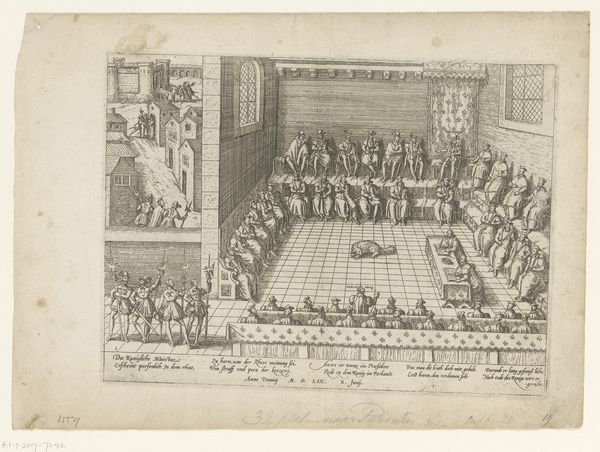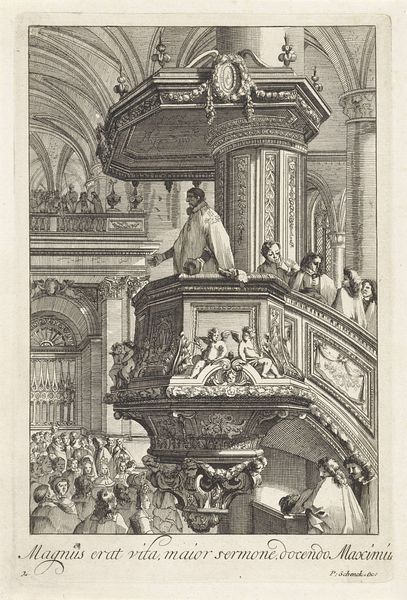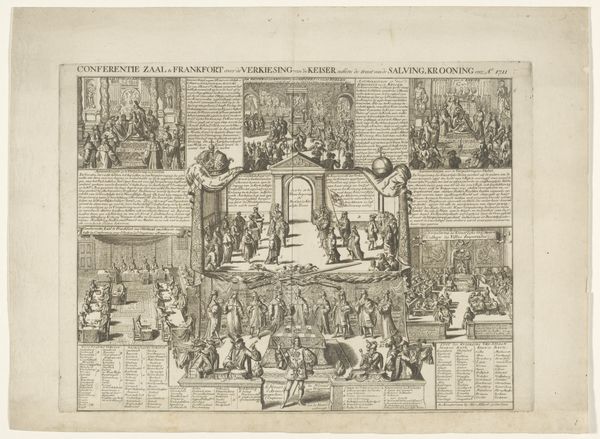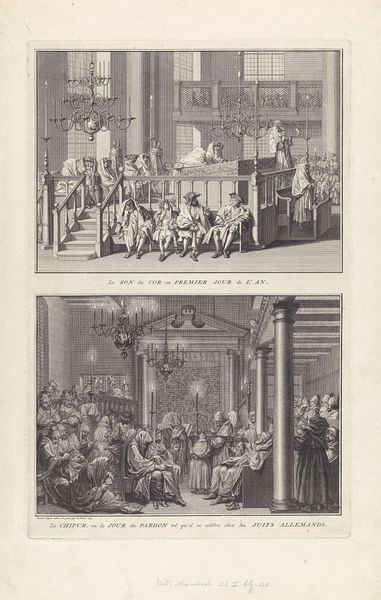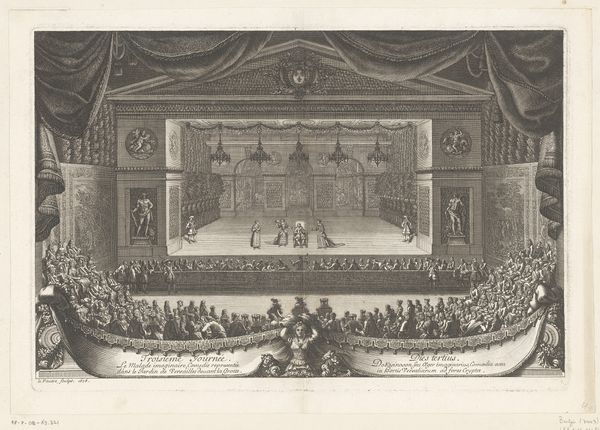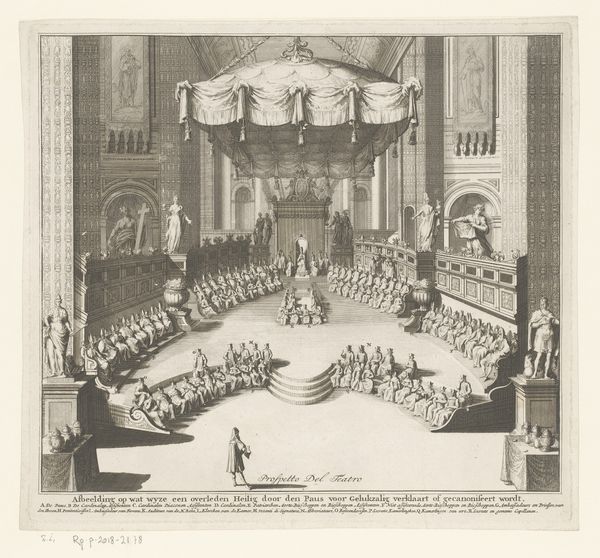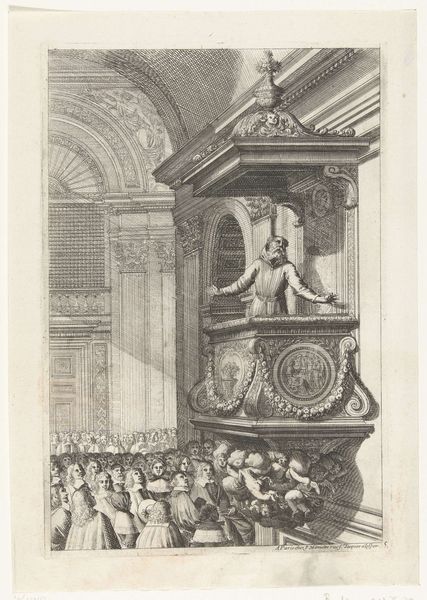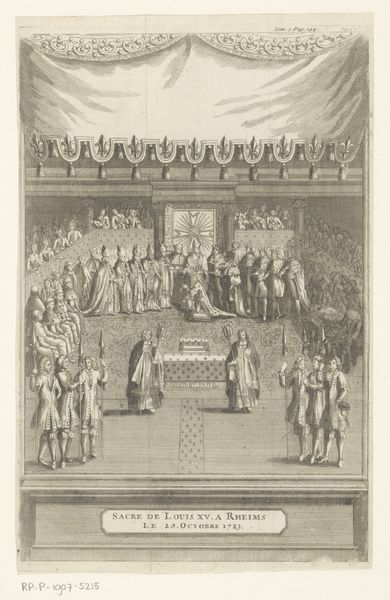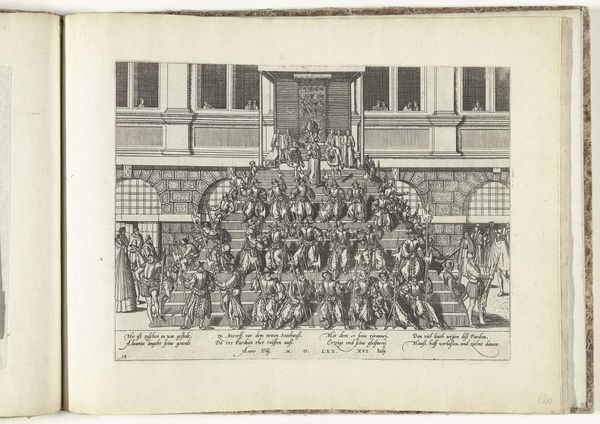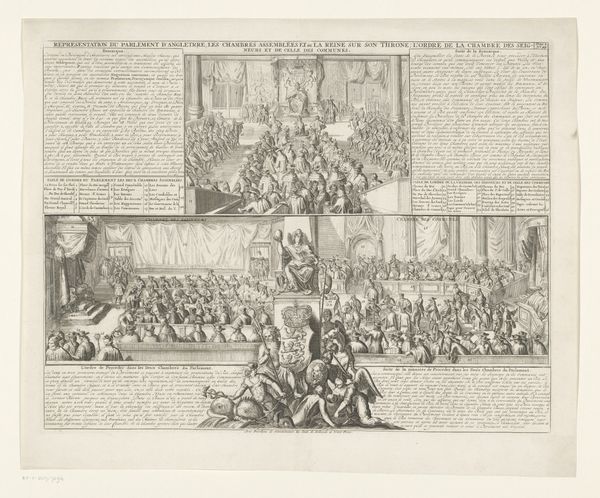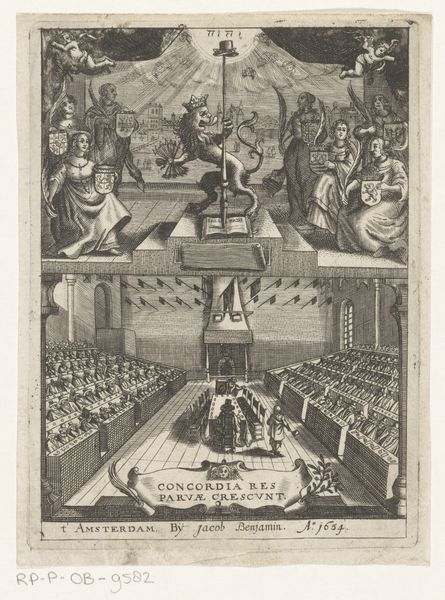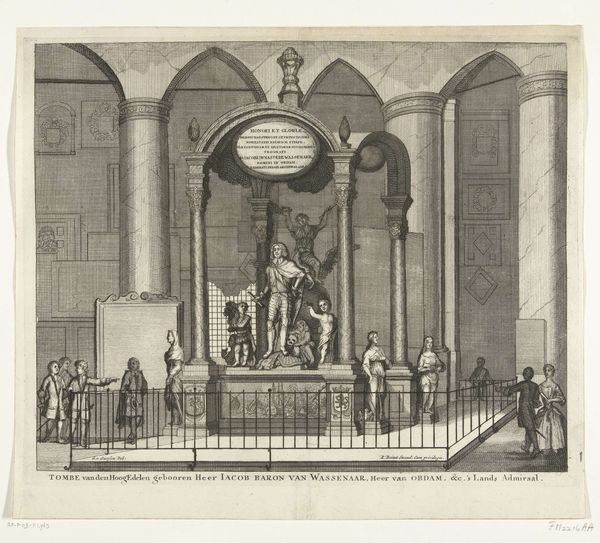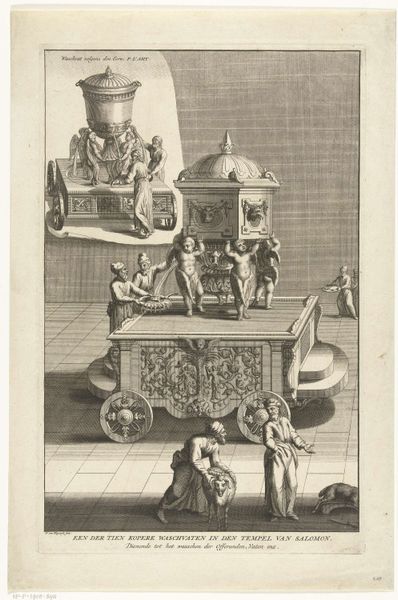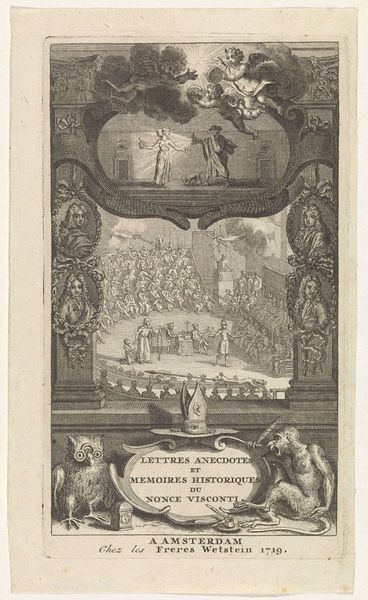
Augustijner monnik presenteert een boek aan koning Karel V 1729 - 1733
0:00
0:00
dominiquesornique
Rijksmuseum
print, engraving
#
medieval
#
narrative-art
#
baroque
# print
#
figuration
#
line
#
history-painting
#
engraving
Dimensions: height 328 mm, width 190 mm
Copyright: Rijks Museum: Open Domain
Curator: What a captivating depiction! This print, dating back to between 1729 and 1733, is titled "Augustijner monnik presenteert een boek aan koning Karel V" – An Augustinian Monk Presents a Book to King Charles V. It resides here at the Rijksmuseum. Editor: The engraving definitely has an austere, almost architecturally rigid feel. The composition, with its emphasis on lines and carefully delineated space, immediately grabs my attention. Curator: Indeed. Think of the socio-political implications: The very act of presenting a book – likely a religious or philosophical text – carries profound significance. This monk, standing humbly before the King, becomes a vessel for intellectual exchange. Power is negotiated. Editor: From a formal perspective, notice how the linear perspective, though somewhat flattened, leads the eye directly to the king and his queen. The symmetry lends an air of formality to the scene, which reinforces the social structure. The engraving is very ordered. Curator: The context is crucial here. King Charles V represents the consolidation of power during a turbulent era, and the act of receiving the book suggests an engagement with knowledge. Who gets to speak and who listens reflects a rigid power dynamic that frames not only the content of the text, but also all interactions surrounding it. This becomes even more prominent with his location upon the staircase that sets him apart from everyone else present. Editor: Observe also the details rendered with remarkable precision, from the intricate patterns of the clothing to the subtle shading that conveys depth, even in such a restricted tonal range. And all of it carefully framed within a tight, formal composition that gives a clear message. Curator: Ultimately, this print is so much more than just a scene from history. It encapsulates the power dynamics between religious orders and monarchs, demonstrating the enduring relevance of faith, knowledge, and power in shaping the historical narrative. Editor: Yes, looking closely allows us to grasp the essence of Baroque printmaking techniques – it’s about constructing meaning through the careful arrangement of visual elements. I find the limited tonal range contributes to the gravity and stoicism, effectively amplifying the message conveyed by the artwork.
Comments
No comments
Be the first to comment and join the conversation on the ultimate creative platform.
